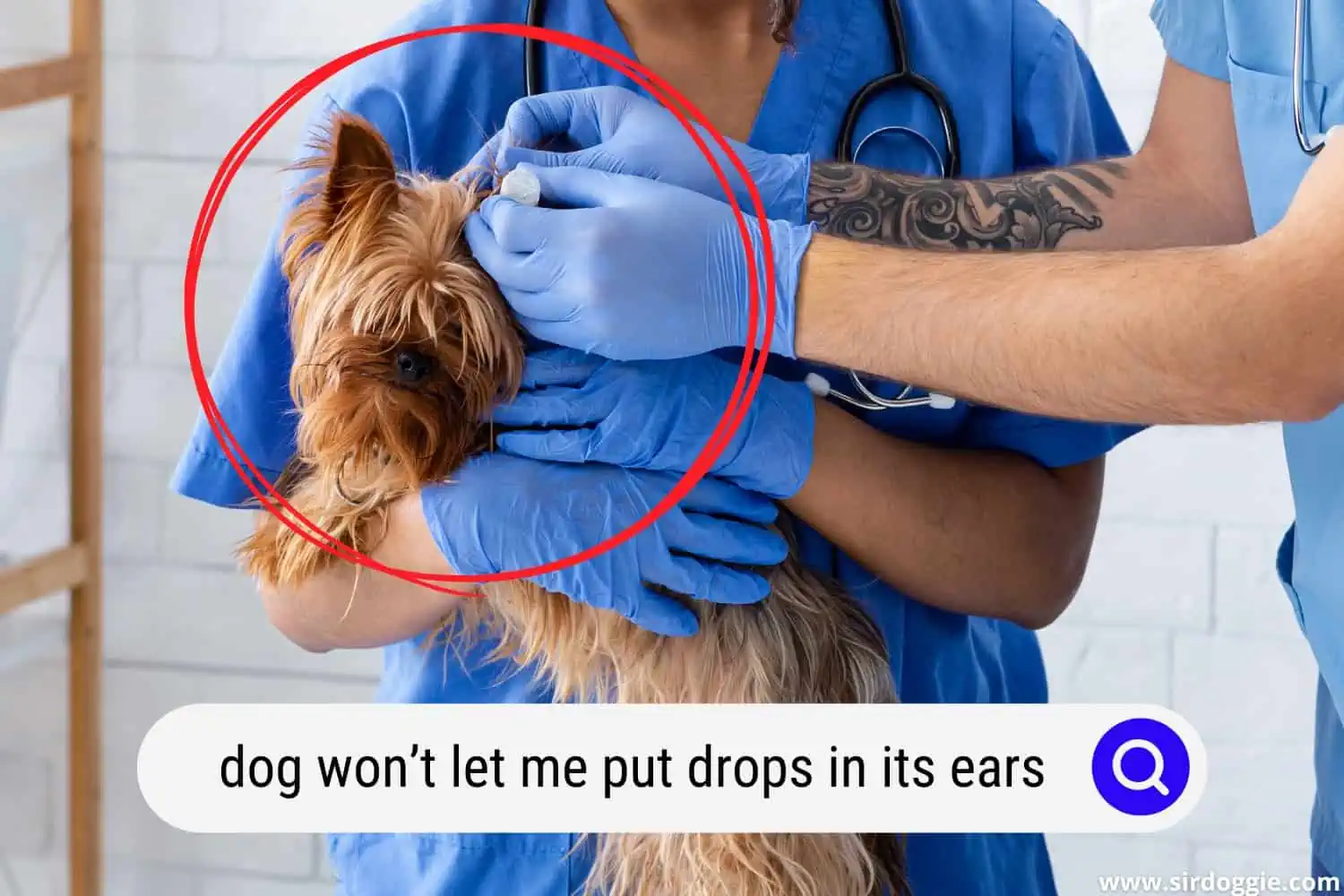My Dog Won’t Let Me Put Drops in Its Ears—What Do I Do?
Ear infections are surprisingly common in dogs! As a dog parent, the bond existing between you and your furry friend can’t be overemphasized, and this is a driving reason for your concern in alleviating your dog from such infections and discomfort.

When an ear infection is diagnosed, your veterinarian may recommend the application of topical ear medications to aid in the relief of your dog’s ear infection and reduce inflammation. Although some dogs may tolerate you putting those drops in their ears, there are plenty that will resist due to the discomfort and unusual sensation.
When your dog resists treatment like, remember that it’s just a reaction to the ongoing ear infection. Ear infections can be very painful. They can easily cause a normally gentle and friendly dog to show resistance by struggling, biting, growling, or scratching at you. They don’t understand that the medication is simply there to help them get better, so the whole situation is a bit foreign to them, and this can be startling.
If my dog won’t let me put drops in its ears, what can I do?
Now that you’re aware of why your dog may resist the application of ear drops in the first place, the solutions won’t seem very far-fetched.
Using dog restraints (such as those that groomers use when needed), handling your dog with extreme care, familiarizing your dog with the process of administering the medication, and giving your dog a treat or reward are all effective methods of safely and calmly being able to administer your dog’s ear drops.
Are you a dog parent experiencing difficulty with putting drops in your dog’s ears? Keep reading for further information on these effective methods for getting the job done.
Safe methods for administering ear drops with a resistant dog
When your friendly dog turns aggressive during an attempt to apply ear drops, it becomes far more difficult to safely and accurately get the medication in your dog’s ears. In these cases, you can sometimes use a collar and leash to help direct your dog’s movements, and you may also want to seek assistance from a friend or neighbor to help reinforce the restraint needed to control your dog. These two options will help facilitate easier application of the ear drops.
Handling your dog with care cannot be overemphasized in this situation. Remember that your dog is experiencing an ongoing ear infection. Therefore, be sure to gently hold the ear and apply the ear drop inside without causing additional pain to your dog, even when some restraint may be needed.
Also, familiarizing your dog with the ear medication application process is incredibly helpful before approaching your dog to administer the drops in the first place. Be sure that you’ve acquired all necessary information on what you’ll need (such as a towel or some cotton, if applicable) aside from the ear drops themselves when speaking to your veterinarian, and let your dog see the setup process and how harmless all of the items involved are. If he sees you interacting with the materials and medicine beforehand and staying calm, this may help alleviate his stress to an extent and make the application process less difficult.
Lastly, giving your dog a treat or reward both before and after a successful ear drop application is a no-brainer. With anything you want your dog to learn or accept in life, providing a treat along with the event is guaranteed to create enthusiasm in your dog, and turn, this will allow you to achieve your aim without stress.
The process of putting drops in the ears of an uncooperative dog
Here are the steps you should use when you need to apply ear drops to the ears of an uncooperative dog:
- Effectively—and safely—restrain your dog.
- Use a veterinary-recommended ear cleaner to clean the ear of any wax or discharge.
- Use cotton wool (not cotton balls) to dry the ear and remove any loose wax.
- Insert the ear drop applicator nozzle into the ear and squeeze enough to administer the recommended number of drops.
- Slightly massage your dog’s ear canal using your finger and thumb in a circular motion to get the oil down into the ear canal and disrupt any remaining wax.
- Allow your dog to give a good headshake.
- Use the cotton wool to remove any excess oil from inside the ear flap.
- Present your dog with a treat or other happy reward for his/her cooperation.
- Repeat the process next time for subsequent doses of medication.
Can you sedate a dog to apply drops to its ears?
The short answer for those wondering if they can sedate their dog every single time the ear drops need to be administered is “no.” You cannot constantly sedate your dog to accomplish the task. Sedation is a very serious medical procedure and should only be used when necessary due to the potential side effects.
When it comes to ear infections, a veterinarian typically will not sedate a dog for this unless they have an infection that has been persistent despite antibiotics and other treatments. During this temporary sedation, they may administer a dose of the ear drops while they’re at it, but it is generally an opportunity for them to take any necessary biopsies, deep clean the dog’s ears, and safely take a look around and see what’s causing the infection to be unable to heal—all while avoiding causing discomfort for your dog.
At most, when you ask your vet, you may be given the go-ahead to administer Benadryl to help calm your dog while administering the drops. Benadryl isn’t a sedative per se but is instead an antihistamine that works against allergies. In some instances, it is even recommended for travel anxiety and motion sickness in dogs as well.
Benadryl stimulates the sleep center in the brain and makes dogs (and most anyone else that takes it) sleepy. Therefore, it’s generally a safe option that you could use before trying to squeeze the drops into your dog’s ears. However, never forget to ask your veterinarian before using such drugs as they do come with their side effects and may or may not be safe for your particular dog depending upon health, age, and weight. Some of the possible Benadryl side effects include tachycardia (increased heart rate) and dry mouth.
What do you do if you notice an ear infection in your dog?
Symptoms like scratching at the ears, redness, an inflamed ear, fluid or yellow discharge coming from the ear, foul/yeasty odor coming from the ears, shaking/tilting its head a lot, scabs from scratching, loss of balance, and hearing impairment can all suggest an ear infection in your dog.
If you notice some of these symptoms in your dog, the first thing you should do is call your veterinarian or visit the nearest veterinary clinic immediately. This will allow your vet to swiftly get into action by physically examining the dog’s ear(s), taking samples, making a diagnosis, and suggesting an effective treatment.

Conclusion
Remember that ear infections in dogs come with excruciating pain and that your dog may react and respond by scratching, biting, or barking whenever it becomes time for you to help treat him. Using caution and patience when managing and treating your dog’s ear infection is the best approach to the situation, but always be sure to consult your vet if you have any questions or need further guidance or assistance if you’re unable to soothe and properly treat your dog on your own.

Family Dog Expert Author
Hi there! I’m Stuart, a devoted dog lover and family dog expert with over a decade of experience working with our furry companions. My passion for dogs drives me to share my knowledge and expertise, helping families build strong, loving bonds with their four-legged friends. When I’m not writing for SirDoggie, you’ll find me hiking, playing with my beautiful dog, or studying music.